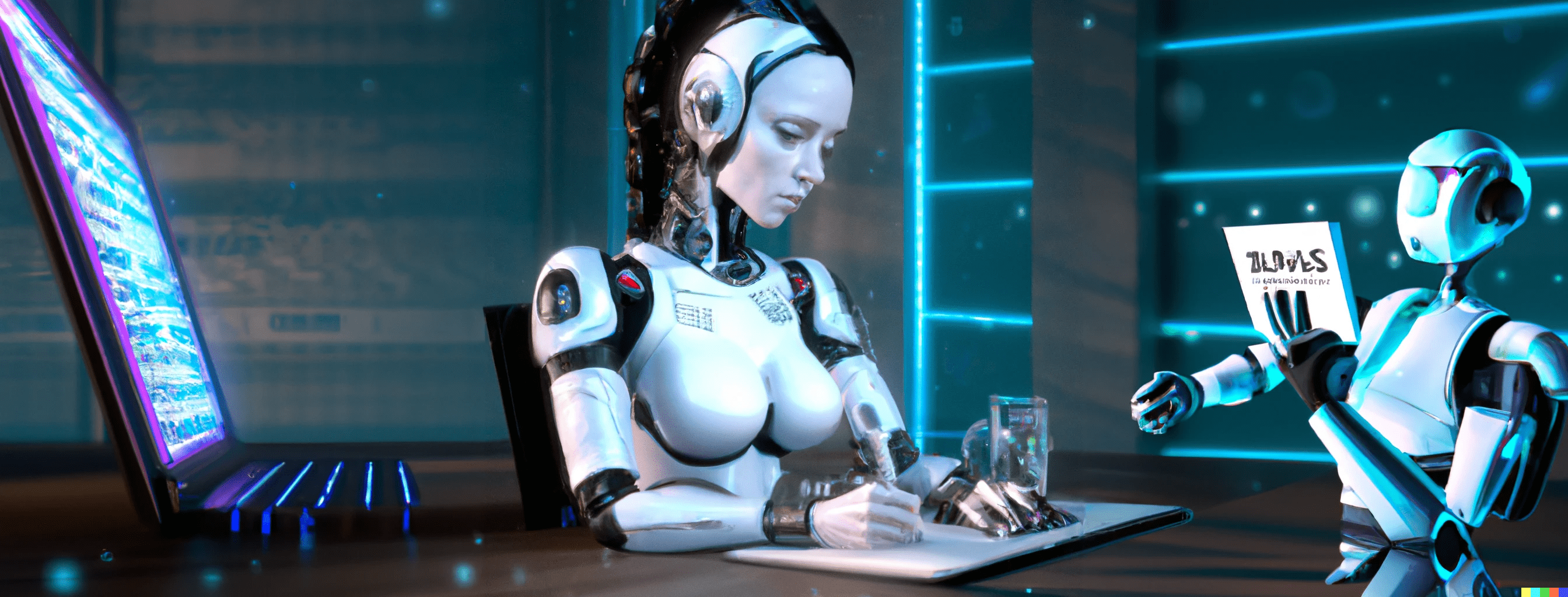
How AI is Powering the Next Wave of Blockchain Innovation, according to an AI
Authors Note: Before digging into the role that AI will play in blockchain innovation in our own words, we thought it prudent to go to the source and ask an AI what it thought its lasting impact will be on Web3.
It's a good start, but we'll probably still keep the humans on staff. For now.
In recent years, there has been a lot of talk about the potential of artificial intelligence (AI) to transform a wide variety of industries. But what about its potential to transform web3 and blockchains? In this blog post, we'll take a look at how AI is being used in these areas and what the future may hold.
How AI is Transforming Web3
There are a few key ways in which AI is transforming web3.
One is by helping to improve the usability of blockchain-based applications. A major challenge with blockchain-based applications is that they can be difficult for users to understand and use. However, by using AI to create user interfaces that are more user-friendly, this problem is being addressed. Additionally, AI can help to improve the security of blockchain-based applications by identifying and flagging potentially malicious activity.
Another way in which AI is transforming web3 is by helping to make data more accessible. One of the benefits of blockchains is that they provide a decentralized way of storing data. However, this data can be difficult for humans to read and interpret. By using AI to interpret this data, it can be made more accessible and useful for humans.
Finally, AI can help to improve the scalability of blockchain-based applications. This is because AI can help with tasks such as transaction processing and data management, which can free up resources so that the blockchain can process more transactions more quickly.
How AI is Transforming Blockchains
In addition to transforming web3, AI is also having an impact on blockchains themselves.
One way in which this is happening is through the use of smart contracts. Smart contracts are self-executing contracts that are stored on the blockchain. They can be used for a variety of purposes, such as managing financial transactions or regulating interactions between parties. By using AI to create smart contracts, it is possible to make them more efficient and effective. Additionally, AI can help to improve the security of blockchains by identifying and flagging potential threats.
Another way in which AI is transforming blockchains is through the use of distributed ledger technology (DLT). DLT refers to a type of database that allows data to be stored across a network of computers rather than on a single server. This makes it more resistant to tampering and cyberattacks. By using AI to create DLTs, it is possible to make them even more secure and efficient.
Finally, AI can help blockchains scale by helping with tasks such as transaction processing and data management.
As you can see, AI is playing a big role in transforming both web3 and blockchains. By helping with tasks such as improving usability, increasing accessibility, enhancing security, and increasing scalability, AI is helping these technologies reach their full potential. It will be exciting to see what further innovations are made in this area in the future!
This blog was written by Jasper.ai.